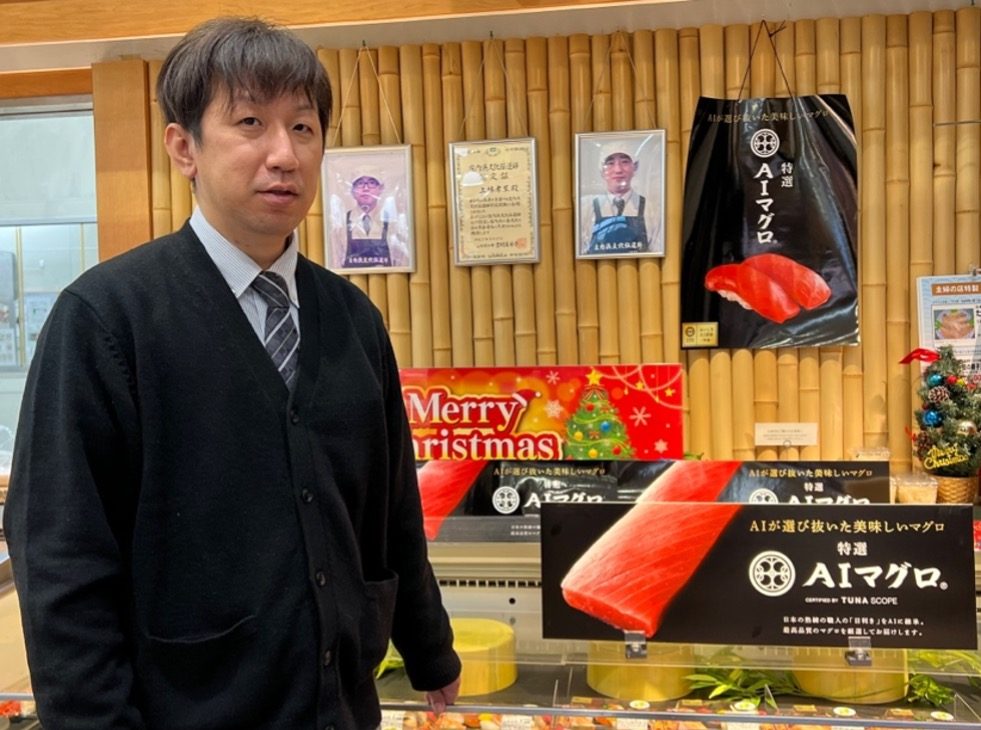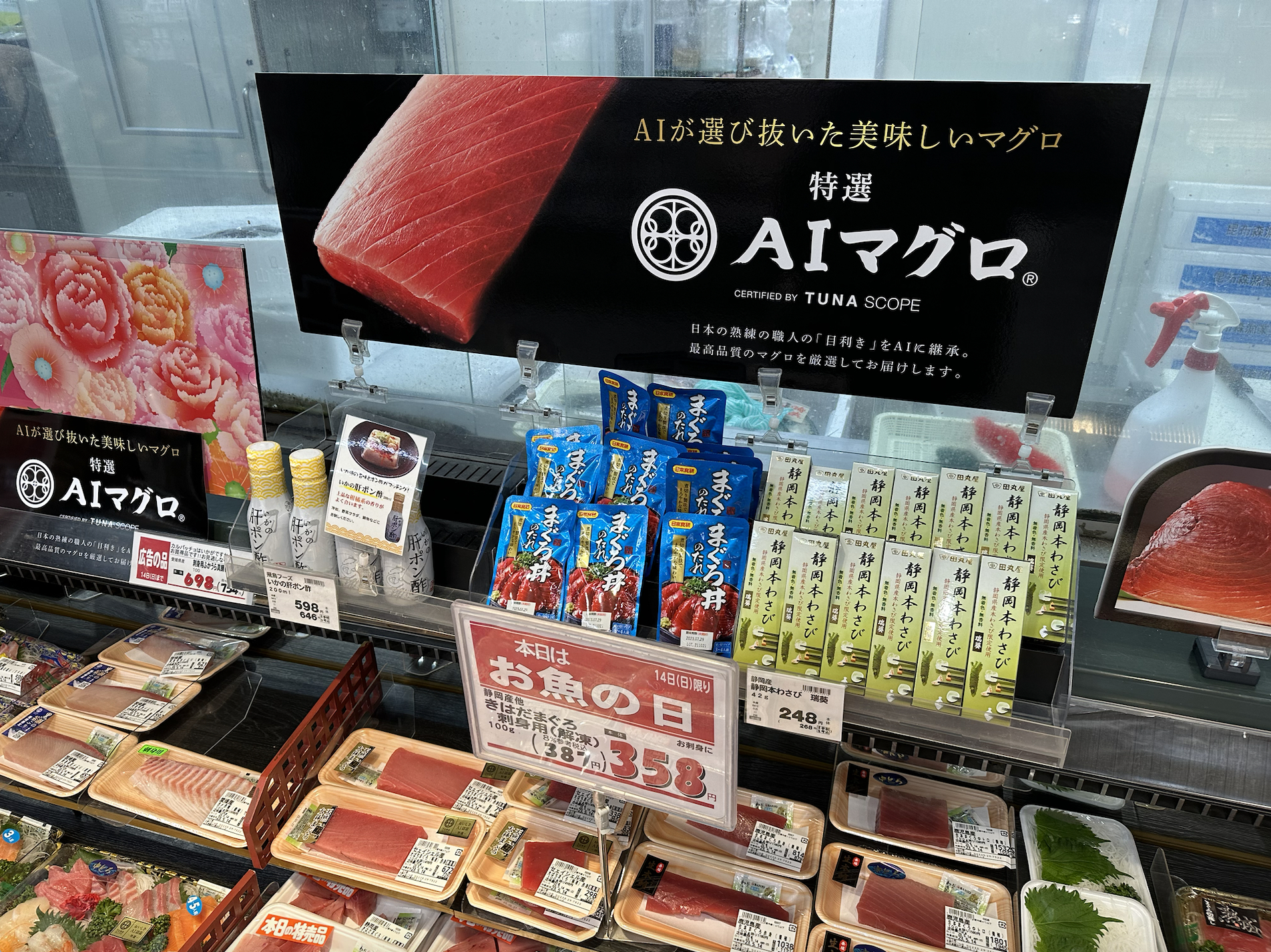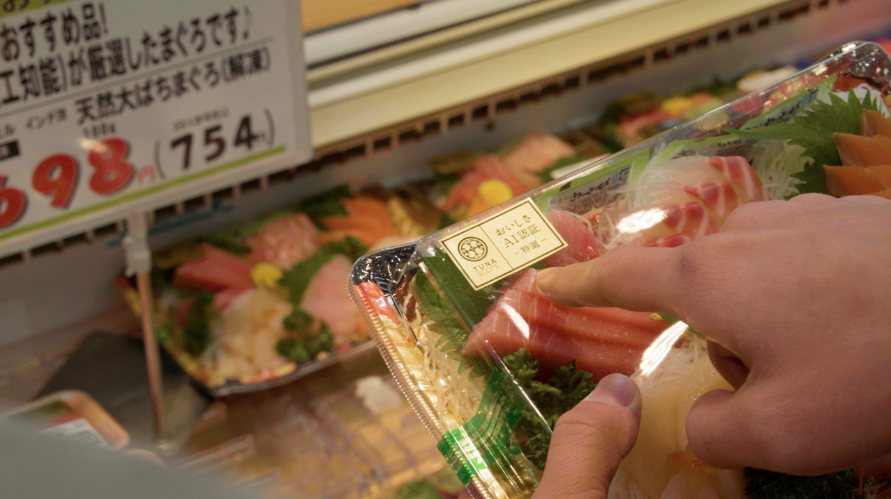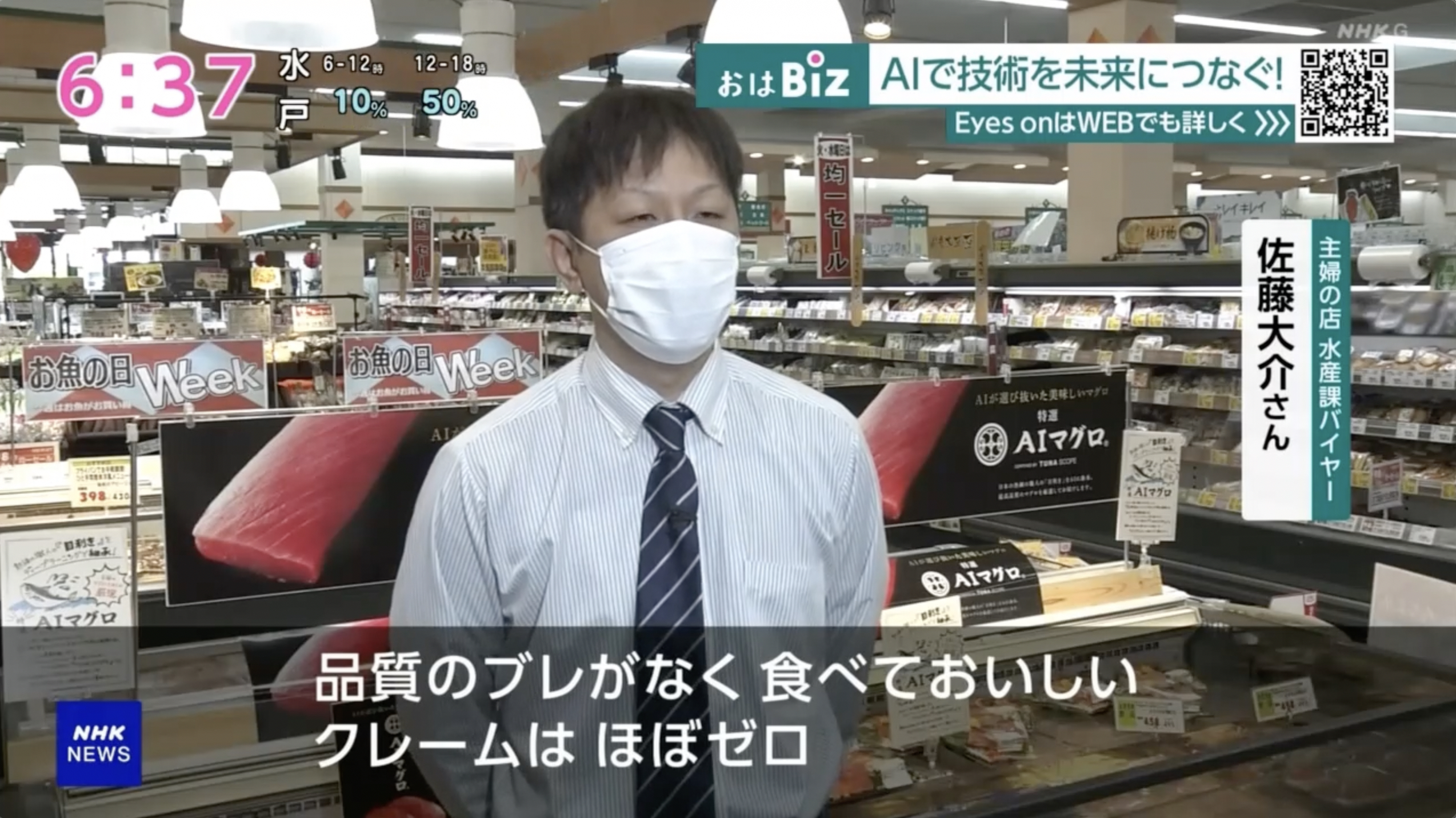-How did customer reactions change after the introduction of AI Tuna?
In the past, we inevitably received a few complaints here and there, but in the nearly two years since bringing in AI Tuna we haven’t seen a single complaint.
I believe this is truly a testament to customer trust in the AI.
In fact, one regional characteristic here in Tsuruoka is a preference for sea bream, flounder and other white-meat fish over red-fleshed varieties. Despite that, we’ve started hearing customers ask for more tuna in their assorted sashimi platters. It has been interesting to see it turn into a must-have product.
With nearby water temperatures rising, in recent years we have also started to see tuna caught in the region, and I feel these new initiatives have spurred the gradual spread of tuna within the local culinary culture.
-At the outset, did you expect AI Tuna to continue selling for so long?
Initially, we pictured it as a limited-time offering, a novel initiative that might create some buzz. When the product was launched, however, the reception in terms of quality exceeded our expectations, which is why we have continued for so long.
Generally, we offer the vast majority of our tuna fresh rather than frozen, but I think a key reason for AI Tuna’s popularity among consumers is the product’s consistent supply, with quality and prices largely unaffected by environmental factors.
By bringing advanced AI-driven quality assessments to the products on supermarket shelves, we hope to create a world where everyone can enjoy delicious tuna. This was the vision that motivated our AI Tuna sales efforts. The interview underscored that thanks to a deep understanding and shared sense of purpose among those involved in purchasing and sales, our products continue to be positively received by more customers around the world.





